I’ve been running an X-10 automation system for a couple of years now which has been fun, but over the past year I’ve been looking for something more modern and robust. There are lots of different options on the market which in theory should be a good thing, but it ends up just confusing matters. The other issue is that anything “high end” means you need an installer. I don’t want to rely on someone (and pay them) every time I want to make an adjustment or addition to my system. Most home automation systems push you towards installation services rather than products. (Many sites don’t even show you products, but talk about “solutions”.) The market really is in need of a big player (Microsoft, Apple, Google) to come in and do it right. Google DID announce intentions with it’s “Android@Home” system last year, but nothing seems to have come from it.
Up until reasonably recently X-10 was really the only way to do it yourself. However, after living with X-10 for a couple of years there are several downsides…
The main problem with X-10 is it’s unreliable. Very unreliable. Because it sends signals over power lines, it’s very much prone to interference. And this is in a 3 year old house, I’d hate to think what it must be like for people with older wiring. The system also doesn’t allow for any sort of confirmation that a command was received, thus if there IS interference and something doesn’t work, the device sending the command has no idea and doesn’t try again.
This isn’t the biggest issue however. The biggest problem I’ve found with the system is each device, (light socket, motion sensor, appliance control etc) Will OFTEN loose it’s setup details. This happens most often if a fuse trips or there is a power outage. When the system comes back online, quite often I’ll find the motion sensor in the bathroom starts turning on the light for the front door (or something equally strange). To make matters worse, programming these things is an exercise in frustrating voodoo. Press tiny buttons inside the device is a certain sequence with certain timing and cross your fingers that the commands make it through. There must be a better way.
The other issue with x-10 is that it’s SLOW. Commands sometimes take 2 seconds to register. This might not seem like much, but it can be frustrating walking into a room and waiting for the light to switch on. If the command isn’t received then the effect is compounded.
Z-Wave is one of the many alternative “standards”, but it seems to offer the features to give me the upgrade I’ve been looking for. Still very much DIY, yet a lot more modern (and hopefully) reliable than X-10.
A couple of places are selling the gear at this time:
Up until very recently (the past couple of weeks), the big thing missing from the lineup of products was the motion sensor. My current setup relies almost exclusively on motion sensors to turn lights on and off, so without that it wasn’t worth the time and money to get it setup. Now that the sensors have been released, I’ve decided to take the plunge.
My Setup:
I’ll give you a quick overview of my setup (in case it’s useful to anyone reading this). I live in a relatively small townhouse (3 bedroom), small living and dining area. Thus, I don’t need a LOT of gear, however I did want to automate all light switches in the home (with a few small exceptions) as well as automate a couple of appliances.
Here is a list of what I decided to purchase.
2 door sensors (for the front door and upstairs toilet)
15 light sensors (to automate most of the house lighting)
3 plug in power adaptors (to automate speakers in my bedroom, a fan and the bug zappers/lights in the garden)
Vera Home Server 2 (Version 3 has just (annoyingly) been announced, but this should do the trick. You can go with a software solution, but after going that route on many other projects, I wanted something more “appliance like” that draws less power and “just works”.
9 motion sensors (mainly to turn on lights as you walk into a room).
To get in future:
There is a thermostat and a door lock that both look interesting and I will look to add in the future. The door lock I’m not 100% sold on, but the thermostat will be a definite addition. (My current thermostat control interface can’t be programmed in any way and is essentially a big on off switch and an analogue dial to adjust temperature.)
Purchasing:
I ended up purchasing through SmartHome.com.au. These guys seem to be the only retail shopfront who sell the gear in my area. There are online stores too, but it was nice to meet face to face with people and pickup the gear physically. Normally online stores are much cheaper, but I found after negotiating a price that SmartHome was just as cheap as anywhere else I could find (cheaper in fact).
It took a few days to order in the motion sensors as apparently they are still a little hard to come by, but Wayne at SmartHome made a good effort in getting it all sorted for me.
Current status:
Although I’ve now collected everything, with the exception of one of the door sensors, I only have a couple of things setup at this stage. This is because the in-wall light switches must be installed by an electrician. I’ve so far setup the server, the door sensor, the plug-in power adaptors and I’ve fiddled with a motion sensor (more on that later).
Setup and First Impressions:
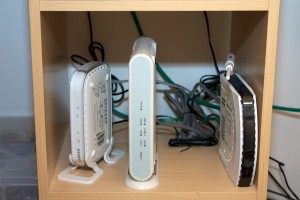
The Vera server was straight forward to setup. It seems reasonably polished and straight forward. The pairing process with other devices I’ve found to be a little tricky. The documentation seems to be written for either different hardware (the non-australian version of the server with a USB key) or an older version of the server software. After some button mashing the plug in power adapters were discovered by the server and setup relatively painlessly.
Adding “scenes” to automate things is still a little clunky in my opinion, but seems to work. Compared with the x-10 stuff, it’s FAST. Basically instant which is great. It also seems a lot more reliable. Z-Wave uses wireless, so as long as it’s within range and there isn’t interference (less likely due to a lowish frequency used by Z-Wave), you should be good 99.9% of the time. I’ve setup timers for the bug zappers to come on just before sunset and set other appliances to switch on and off at certain parts of the day which after a week is working well. They also report the amount of energy being used by the connected appliance which is great!’

The door sensor documentation was pretty much useless, but again, after the button mashing it registered and set itself up. I’ve put it on the front door and it seems to work (I made opening the door turn on some speakers just to test it). Will report more once the lights are installed.
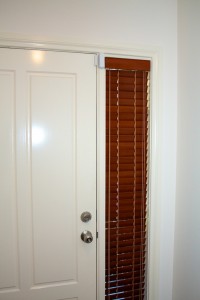

The motion sensors still seem unfinished. The documentation is 18 pages long as opposed to one sheet for the other gear. The first page says to use an old version of the firmware (downgrade the server) which I’m not sure I really want to have to do. Surely it should work with the new version? The motion sensors have temperate and light sensors in them too which means they show up as 3 separate devices to complicate matters. Once I finally got the server to register one of the sensors, the documentation asks that you manually enter a lot of technical values (things like: “Make this setting 2byte hex and enter F in the value field”). A lot of stuff that really isn’t easy to follow. It doesn’t help that the instructions are written in broken english and often say things like “this will set the device into exclusion mode” when I’m pretty sure they mean the exact opposite of that. I managed to get the motion sensor to turn on the speakers (my go-to test appliance) once, but then it didn’t want to work again. I’ve put it aside until the lights are installed and I’m able to test it properly. It looks like this is going to be by far the hardest bit of getting it all setup.
Apart from the motion sensors, the rest of the system seems relatively straight forward.
Other stuff:
The other thing that always bugged me with X-10 was the interfaces to control the system. I ended up making something from scratch using HTML, some scripting and the SDK for an iPad interface, but the “off the shelf” iPhone remotes and web interfaces were always pretty average. They also never seemed to work for certain appliances. With the Z-Wave gear there seems to be a lot more choice with respect to available interfaces. The interfaces themselves seem a lot more advanced too. Based on SmartHome’s advice, I’ve decided to try out SQ Remote HD. It’s universal for iPhone and iPad which is great and was cheap at 10 bucks. It’s also very customisable and the controls respond instantly. A definite improvement over the x-10 stuff!
Conclusion:
So far I’m happy with it all, but nervous about getting the motion sensors setup. I’ve covered a bit of Z-Wave detail here, but there are tons of details I’ve left out. If anyone has any questions, feel free to ask them in the comments! I will make another post after this weekend when the electrician comes to install the light modules.

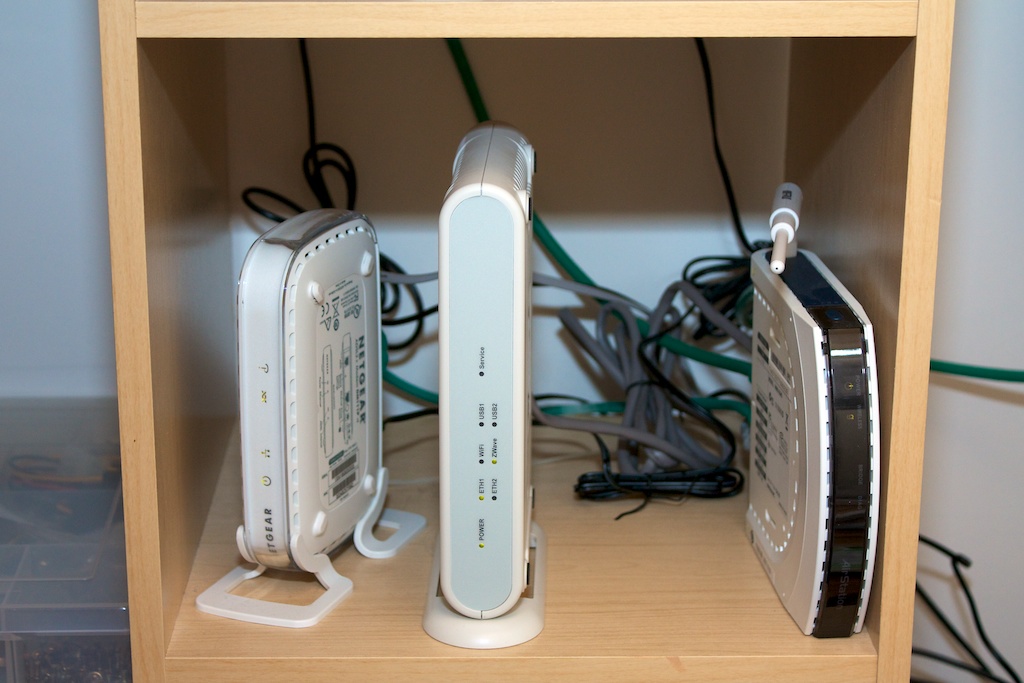
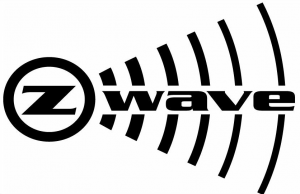

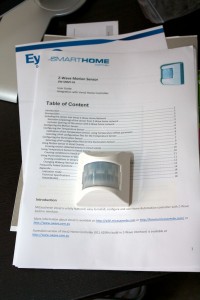
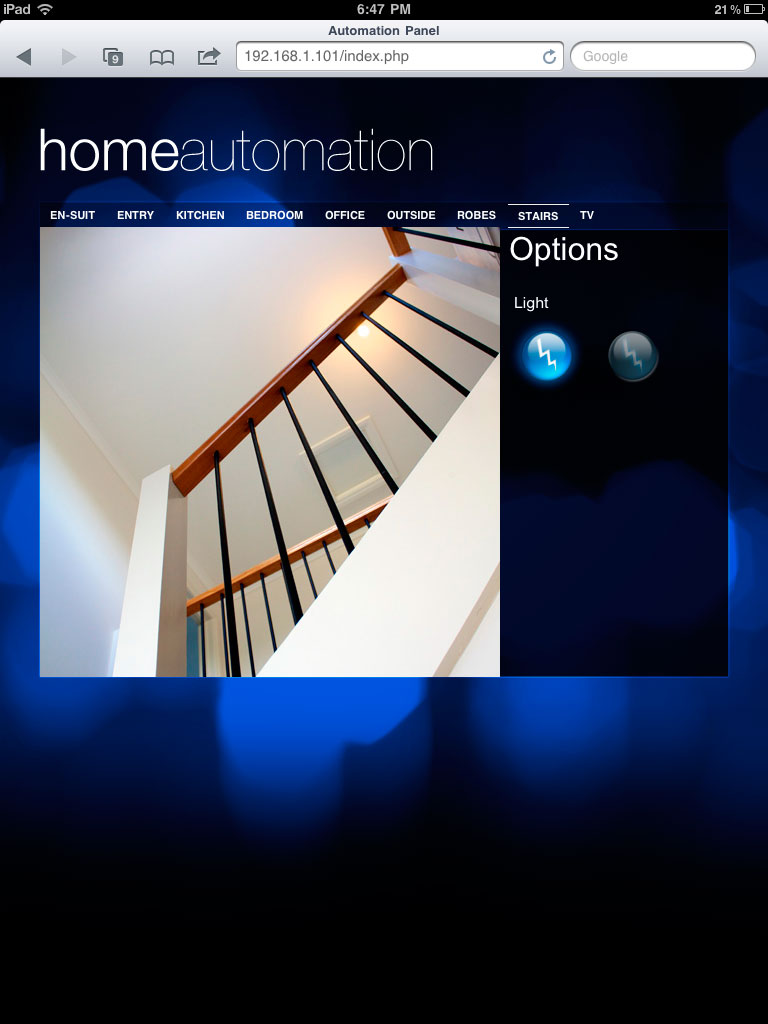

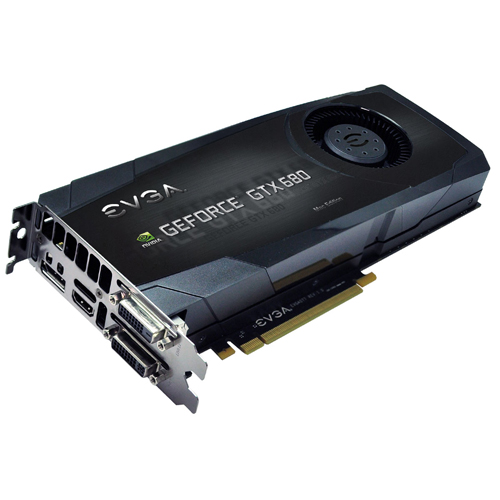

Very interesting article. You might want to have a look at what we have recently launched in the UK – a home control system which supports Z-wave but also works with wired devices too. We’re aiming initially at new build projects but are also keen to find people who would be interested to “play” with the system as we add new features, and can offer reduced pricing for such “beta” type applications.
Great article! Am currently having a house designed and would love to read Part 2. I think z-wave will be the home automation system we go with.
Let me put things into perspective. The question whether Leanne is too skinny or not is not what is of importance here.Things that we should worry about: * Promoting soon1eeRm7;s waist as a bigger asset than their heart or mind to very young girls. * Lying, in order to earn clicks, to vulnerable people who then put their trust in the hands of quacks. * Young, vulnerable people getting idiotic health advice, ballooning as the result of this, and then being laughed at and bullied, with their stories censored out from 30BAD forum.
Hi,
How is it going now. Any chance of an update?
Regards Dave
These dolls are some amazing work of art!!! I want one, so I will start saving to get one. Personally, I think that the body type 2D, which has got more &#eh20;fl8s2” in the bum, thighs and legs, is more real and very sexy! I just wish that the breats could be a bit smaller, like in 1B.
Hi David and Pat,
I’ve quickly posted part two. Please let me know if you have any specific questions and I’ll do my best to answer them!
Here is part two: http://mildgreenhelpliquid.com/?p=502
May I simply say what a relief to discover somebody that genuinely knows what
they’re discussing over the internet. You certainly realize how to bring a problem to light and make it important. A lot more people ought to look at this and understand this side of your story. It’s
surprising you aren’t more popular given that you certainly possess the gift.
I was curious if you ever considered changing the structure of your blog?
Its very well written; I love what youve got to say.
But maybe you could a little more in the way of content so
people could connect with it better. Youve got an awful lot of text for only
having one or two images. Maybe you could
space it out better?
my site – business marketing
Having read this I thought it was extremely enlightening.
I appreciate you spending some time and energy to put this short article together.
I once again find myself personally spending way too much time both reading and posting comments.
But so what, it was still worth it!
My web page … shopping blog
Hi there, I wish for to subscribe for this webpage to
get newest updates, therefore where can i do it please help.
そして、最後に、我々は詳細な観察には非常に、非常にまれな腕時計は、白金にパテックフィリップノーチラスref 5711。パテックフィリップの最高を提供しただけなのだ(あなたが何を意味する単語を取ること)のクライアント。とだけではありませんが、異なる材料。他の微妙な違いのホストでもあります。この珍しい腕時計の良い観察をするあなたの機会は、ここにあります。 http://www.okakaku.com/Super-Copy-3646.html
手の運動により薄いプロファイル、43ミリメートルのケースと一緒に来るのにはかなりのすらりとした12 mmである。 カルティエ 時計コピー この線のために開始され、3つのモデルで、あなたは2つの異なるケース素材ステンレス鋼のあなたの選択があります(黒や銀メッキされたダイヤル)または18金レッドゴールド、銀メッキされたダイヤル。 http://www.brandiwc.com/brand-super-12-copy-0.html
多分、それlum-tecプッシャーのブライトリングのような洗練された技術を使用します。を見るために、ここを読む方法を使用して作成するブライトリング磁石の接触の密売人にそのアベンジャーシーウルフクロノグラフ腕時計。私は、この概念は、内部のリングを回転させるはずのクラウンの設計に変換することができるかどうかわかっていません、しかし、それは彼らのために良いスタートであるかもしれません。もう一つのアプローチは、ヘビーデューティのガスケットのシステムの1つの地獄を使うことです。この時計の開発として、我々は必然的にlum-tecの賢い解決のより良い考えを得ます。 http://www.ooobag.com/wallet/louisvuitton/index_12.html
隣に立っているが、最も確かでない影のウブロウブロ1、2はその前作より大きく、おそらくもっと野心的です。 ミュウミュウバッグスーパーコピー それはあまりにもきれいなカットを提案するウブロ2」の優れた「ウブロ1に対して、むしろこの新しい造りサイト展開をウブロ彼らが適当と考えて、彼らの建物の責任を分割するのを可能にします。 http://www.wtobrand.com/lvc8.html
有効な対応を今回の世界的な金融と経済危機、スイス各界の去年は行動して。政府は前後して2度経済振興計画を発表し、税収の手段を通じて呼びかけと励まし社会の各分野の減少リストラ;経済界を積極的に対応し、勤務時間短くコスト削減の方式で、努力して就業市場の安定を維持する。昨年12月、スイス300社以上の企業のスタッフの労働時間短縮、今年1月にこのような企業が増えた1200家。スーパーコピーバッグ労働時間の短縮と同時に、大多数の企業が従業員を育成して、未来への就職市場は不測の風雲。最近の一項の経済調査によると、これまでの半分以上の従業員を保留スイスたい仕事で減少の給与、しかもしっかり職場の変化の準備。 http://www.newkakaku.com/cb11.htm
ビートの秒針の左側に何か他のものに興味があります。これは「飛行時間ダイヤルとそれが本当に性筋膜の手の一種である。完全な革命が各々の第2の手を持っているいくつかのを見て、我々はそれらを参照としての「飛ぶ」の理由は、彼らがとても速く動くように見えるということです、時計屋は彼らが飛んでいる」と言います。 ブレゲスーパーコピー 「伝統の手によりはむしろ、デウィット・2つの重なり合うディスクを開発した。ディスクに小さな穴があります、そして、上ディスクに移動するとき、それはダイヤルの上にユニークなアニメーションを作成します。 http://www.bagkakaku.com/vuitton_bag/2/N48181.html
ガス針表「夜光一流、耐震抜群、幸運で正確で、長持ちして丈夫”の品質の特徴になる原因スイスの有名な専門军表旧家。1892年にガス針表から製造専門軍用腕時計、军表製造史百年を超える。ドイツ、イギリス、インドなど多くの国の軍隊は大量に使用したガス針表。戦の間に、イギリスのラクダ特殊兵、イギリス空軍とインド軍は使い捨て http://www.ooobrand.com/bags/hermes/644.html
この最初の腕時計の白い腕時計はクールということを証明した。それは、垂直クロノグラフ分計800シリーズ名tx線形クロノグラフ腕時計の1つです。第2のタイムゾーンとダイヤルの全体的なデザインは独特で、とげとげしくなる逆行ダイヤルがある。ホワイトトーン腕時計を通して持続する(明らかに)、しかし、それは100 %の定義はありません。あなたにはまだ若干のスポーティなオレンジとゴールドトーンダイヤルと手の上に上がりました。それは本当にうまくやった。私は高浮き彫りを付して白い回転ベゼルにホワイトが好きにしてください。グッチスーパーコピーブランド財布腕時計を見事に45 mmのワイドサイズまたは多分私の手首の上で非常に快適でした。あなたは、ダイヤルは最初は少し威嚇を見つけるかもしれませんが、ライブであなたの観察の後にすることは非常に簡単です。本当に素敵な白い色はしばしば見やすいスポーツです。この時計は本当に新しいであったので、私は正確なモデル番号を見つけることができません、しかし、それは価格の間にどこかについてドルであるべきです。 http://www.eevance.com/tokei/hermes
初めてこのショップでお買い物をしたので、不安でしたが、迅速かつ丁寧なメール等のご連絡で安心して商品の到着を待つことが出来ました。
新品の商品だけれど新品同様と書かれていたので、到着までその程度が心配でしたが、写真で見えていた汚れもそんなに気にならず、予想以上の新品同様で・・・良かったです。手書きのお手紙まで添えてお送りいただき、ネットでのお買い物ですのに、お店の方の誠意が伝わってきて嬉しかったです。また、こちらで良いものに出会えるような気がします。
★ルイヴィトン★ヴェルニ★アンヴェロップカルトドゥヴィジット★名刺入れ/カードケース★ルージュフォーヴィスト(紫)★M91540★
新品の商品だけれど新品同様と書かれていて、到着までその程度が心配でしたが、写真で見えていた汚れもそんなに気にならず、予想以上の新品同様で・・・良かったです。愛着を持って使えそうです。
色も新色できれいだし、典型的な使いやすい名刺入れの大きさで、活躍しそうです。